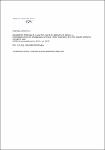Knockdown of porcine endogenous retrovirus (PERV) expression by PERV-specific shRNA in transgenic pigs
Dieckhoff, Britta
Petersen, Björn
Kues, Wilfried A.
Kurth, Reinhard
Niemann, Heiner
Denner, Joachim
Background: Xenotransplantation using porcine cells, tissues or organs may be associated with the transmission of porcine endogenous retroviruses (PERVs). More than 50 viral copies have been identified in the pig genome and three different subtypes of PERV were released from pig cells, two of them were able to infect human cells in vitro. RNA interference is a promising option to inhibit PERV transmission. Methods: We recently selected an efficient si (small interfering) RNA corresponding to a highly conserved region in the PERV DNA, which is able to inhibit expression of all PERV subtypes in PERV-infected human cells as well as in primary pig cells. Pig fibroblasts were transfected using a lentiviral vector expressing a corresponding sh (short hairpin) RNA and transgenic pigs were produced by somatic nuclear transfer cloning. Integration of the vector was proven by PCR, expression of shRNA and PERV was studied by in-solution hybridization analysis and real-time RT PCR, respectively. Results: All seven born piglets had integrated the transgene. Expression of the shRNA was found in all tissues investigated and PERV expression was significantly inhibited when compared with wild-type control animals. Conclusion: This strategy may lead to animals compatible with PERV safe xenotransplantation.
Files in this item
No license information

